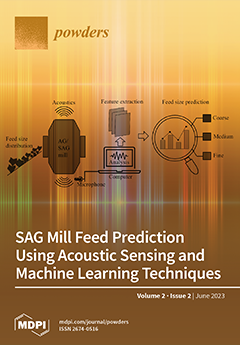Flaxseed oil is rich in polyunsaturated fatty acids, and its incorporation into food formulations is limited due to its hydrophobic nature and susceptibility to oxidation. The aim of this work was to analyze the effect of wall material mixtures (modified starch Capsul
®
[...] Read more.
Flaxseed oil is rich in polyunsaturated fatty acids, and its incorporation into food formulations is limited due to its hydrophobic nature and susceptibility to oxidation. The aim of this work was to analyze the effect of wall material mixtures (modified starch Capsul
® and rice and pea protein concentrate) on the efficiency of flaxseed oil encapsulation by freeze-drying, physical characterization, and determining oxidative stability. For the preparation of powders, four emulsions with an oil–wall material ratio of 1:3 were produced and characterized. The mass ratio between rice and pea proteins was fixed at 50–50%. The mass ratio of the protein-Capsul
® mixtures was varied by 0–100%, 10–90%, 20–80%, and 30–70%. Based on the creaming index results, all emulsions showed good stability after 24 h of analysis. The powders showed low moisture content (<3.23%), bulk density (<0.2659 kg/kg), and packed bulk density (<0.4389 kg/kg). Encapsulation efficiency decreased with increasing protein content, ranging from 93.40% (protein-Capsul
® ratio of 0–100%) to 18.26% (protein-Capsul
® ratio of 30–70%). However, the best oxidative stability results (smaller increases in the peroxide index values at the end of the stability experiments) were obtained for the powders containing the highest levels of vegetable proteins (protein-Capsul
® ratio of 20–80% and 30–70%, respectively).
Full article



